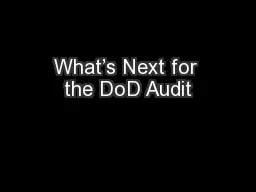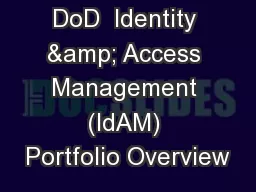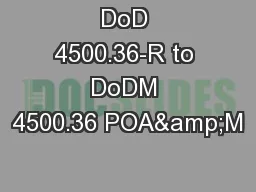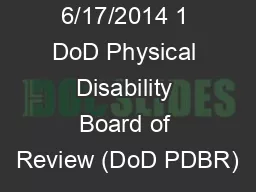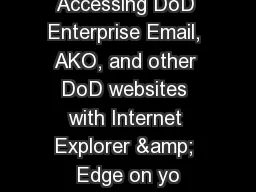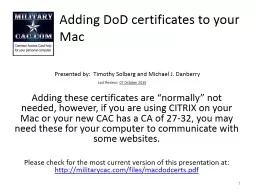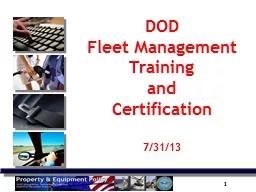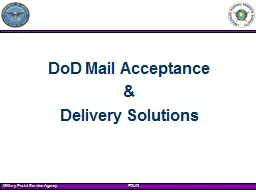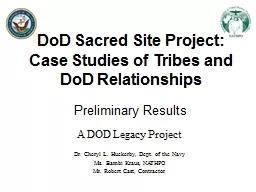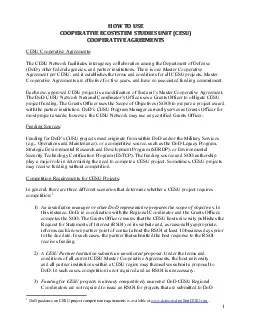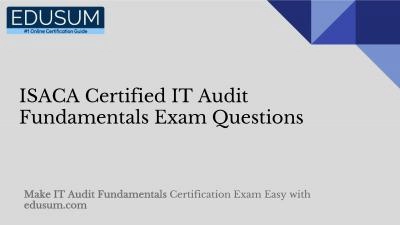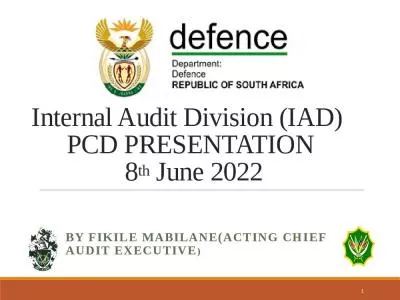PPT-What’s Next for the DoD Audit
Author : danika-pritchard | Published Date : 2018-11-22
Office of the Under Secretary of Defense Comptroller Mr Mark Easton Deputy Chief Financial Officer OUSDC Ms Alaleh Jenkins Director OUSDCFIAR WashingtonASMC NCR
Presentation Embed Code
Download Presentation
Download Presentation The PPT/PDF document "What’s Next for the DoD Audit" is the property of its rightful owner. Permission is granted to download and print the materials on this website for personal, non-commercial use only, and to display it on your personal computer provided you do not modify the materials and that you retain all copyright notices contained in the materials. By downloading content from our website, you accept the terms of this agreement.
What’s Next for the DoD Audit: Transcript
Download Rules Of Document
"What’s Next for the DoD Audit"The content belongs to its owner. You may download and print it for personal use, without modification, and keep all copyright notices. By downloading, you agree to these terms.
Related Documents

